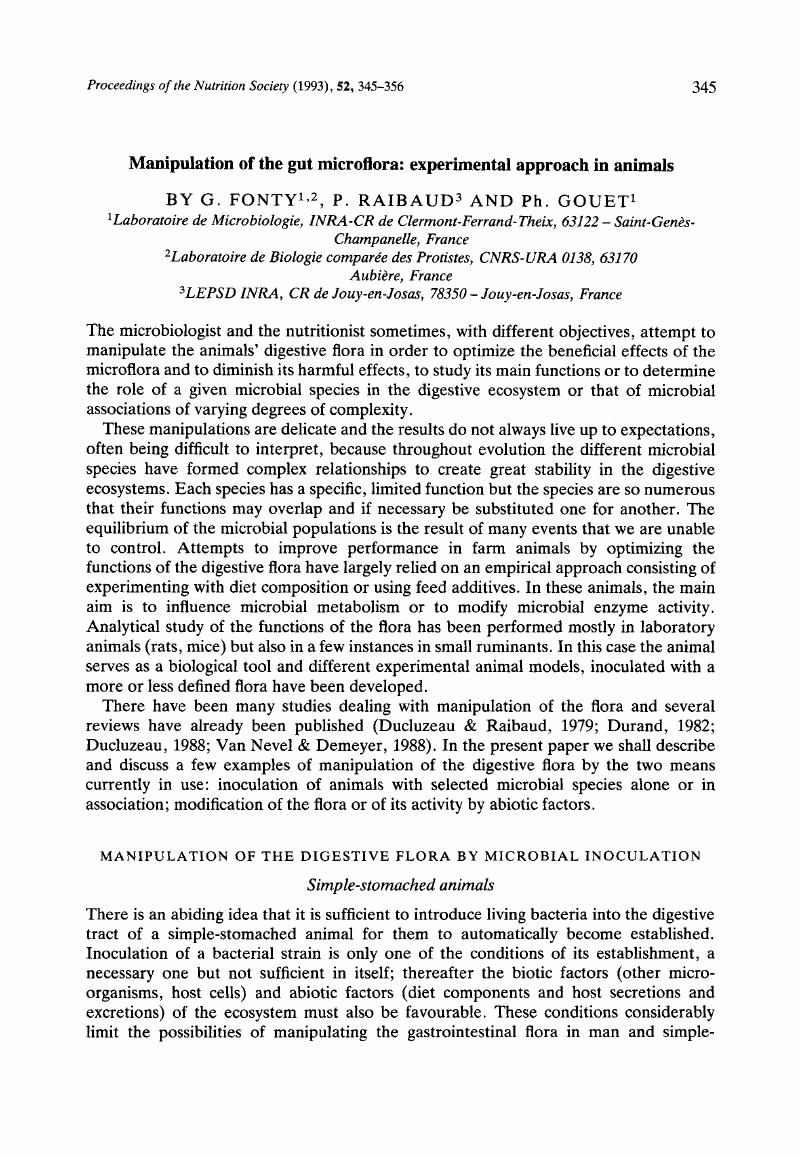Crossref Citations
This article has been cited by the following publications. This list is generated based on data provided by Crossref.
Van Nevel, C. J.
and
Demeyer, D. I.
1996.
Control of rumen methanogenesis.
Environmental Monitoring and Assessment,
Vol. 42,
Issue. 1-2,
p.
73.
Ringø, Einar
and
Gatesoupe, François-Joël
1998.
Lactic acid bacteria in fish: a review.
Aquaculture,
Vol. 160,
Issue. 3-4,
p.
177.
Halas, Danka
Hansen, Christian F.
Hampson, David J.
Mullan, Bruce P.
Wilson, Robert H.
and
Pluske, John R.
2009.
Effect of dietary supplementation with inulin and/or benzoic acid on the incidence and severity of post-weaning diarrhoea in weaner pigs after experimental challenge with enterotoxigenicEscherichia coli.
Archives of Animal Nutrition,
Vol. 63,
Issue. 4,
p.
267.
Hansen, C. F.
Phillips, N. D.
La, T.
Hernandez, A.
Mansfield, J.
Kim, J. C.
Mullan, B. P.
Hampson, D. J.
and
Pluske, J. R.
2010.
Diets containing inulin but not lupins help to prevent swine dysentery in experimentally challenged pigs1.
Journal of Animal Science,
Vol. 88,
Issue. 10,
p.
3327.
Blajman, Jesica
Gaziano, Cristian
Zbrun, María Virginia
Soto, Lorena
Astesana, Diego
Berisvil, Ayelén
Scharpen, Analía Romero
Signorini, Marcelo
and
Frizzo, Laureano
2015.
In vitro and in vivo screening of native lactic acid bacteria toward their selection as a probiotic in broiler chickens.
Research in Veterinary Science,
Vol. 101,
Issue. ,
p.
50.
Chundakkattumalayil, Honey Chandran
Kumar, Sreelekshmi
Narayanan, Rakhie
and
Thalakattil Raghavan, Keerthi
2019.
Role of L. plantarum KX519413 as Probiotic and Acacia Gum as Prebiotic in Gastrointestinal Tract Strengthening.
Microorganisms,
Vol. 7,
Issue. 12,
p.
659.
Yang, H.
Heirbaut, S.
Jeyanathan, J.
Jing, X.P.
De Neve, N.
Vandaele, L.
and
Fievez, V.
2022.
Subacute ruminal acidosis phenotypes in periparturient dairy cows differ in ruminal and salivary bacteria and in the in vitro fermentative activity of their ruminal microbiota.
Journal of Dairy Science,
Vol. 105,
Issue. 5,
p.
3969.





